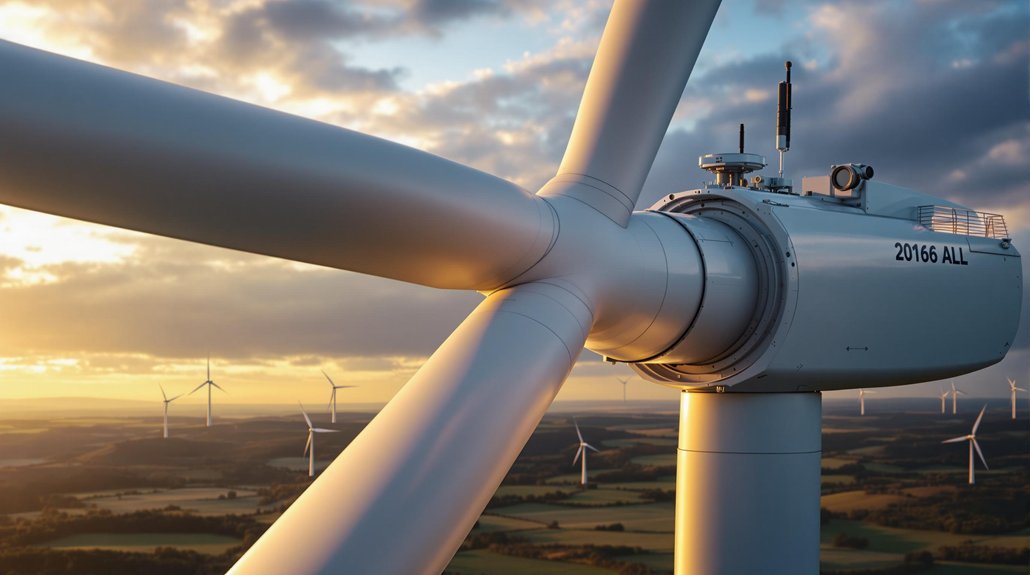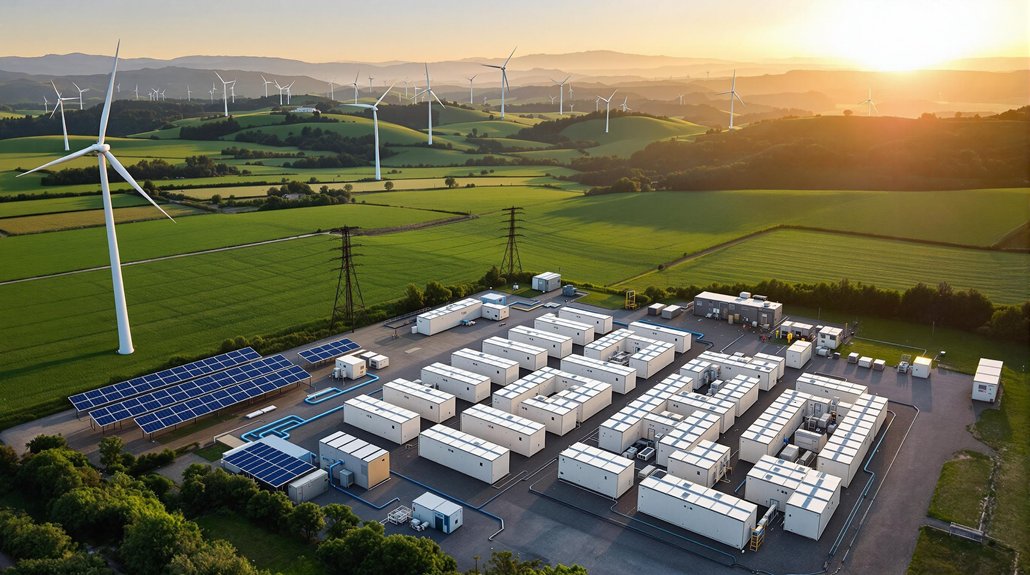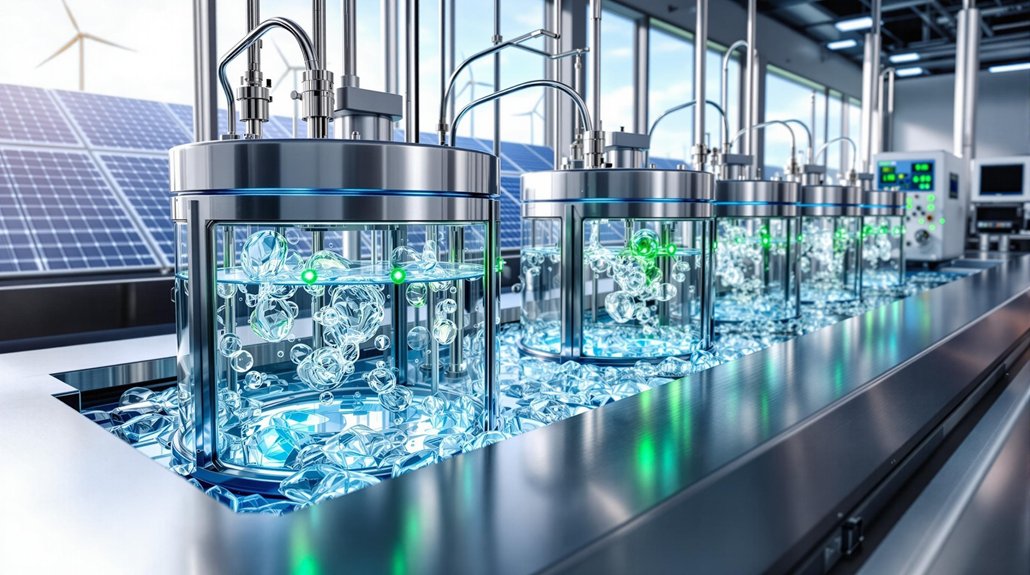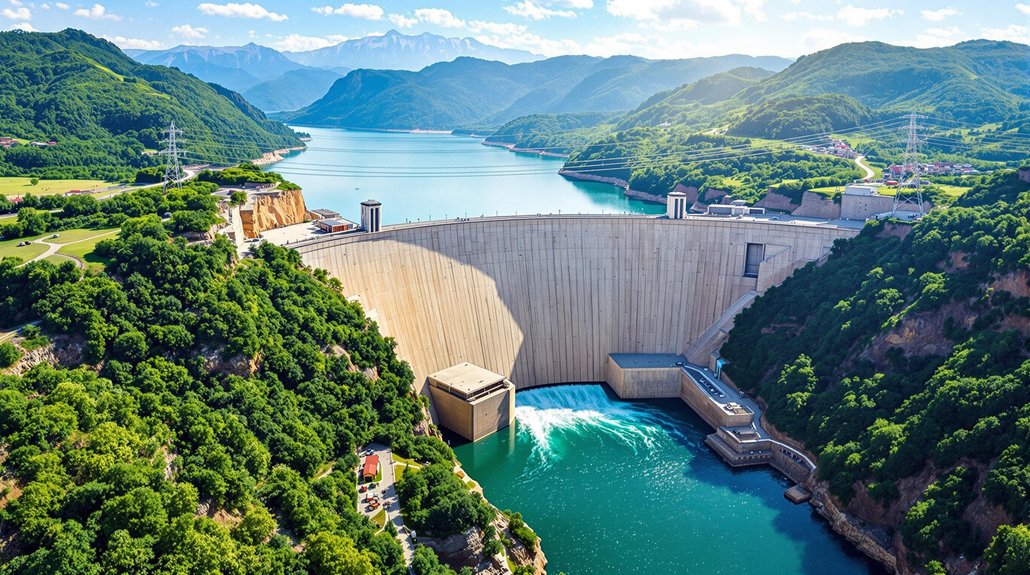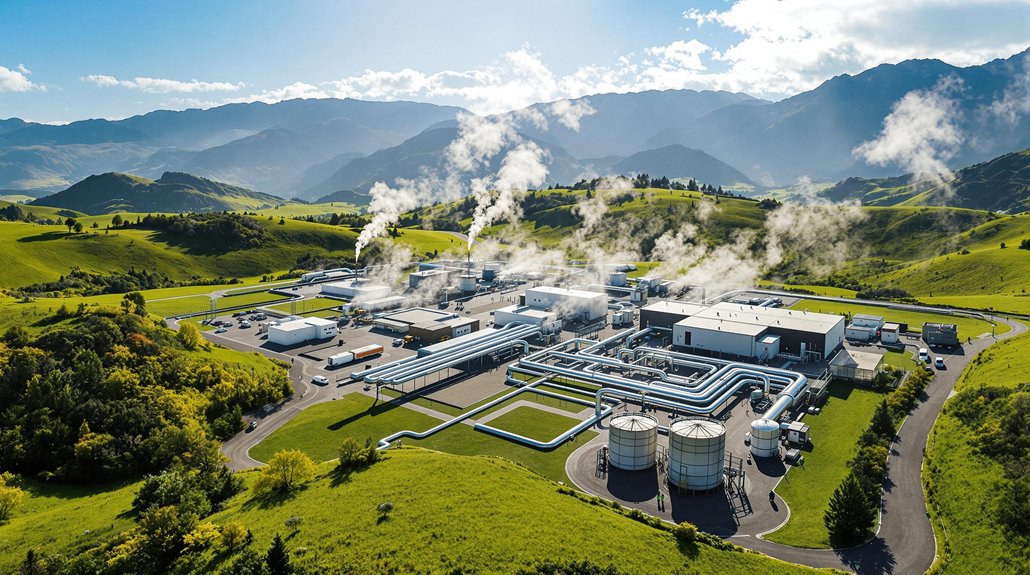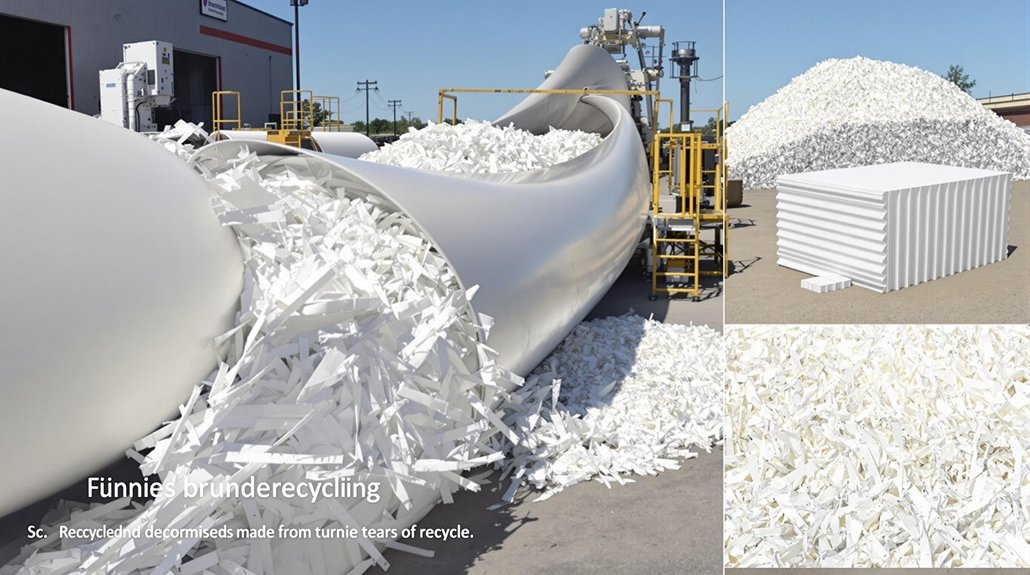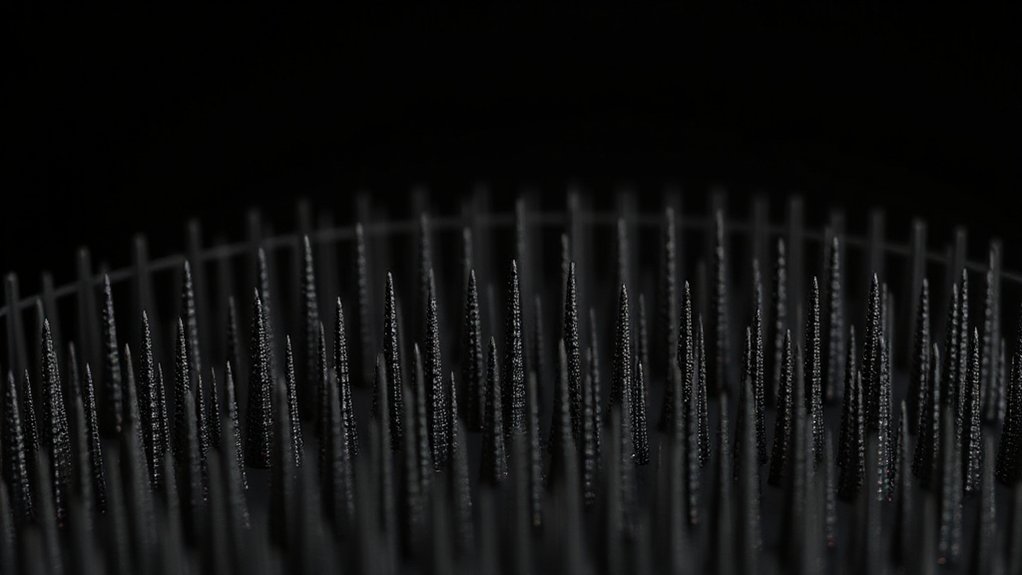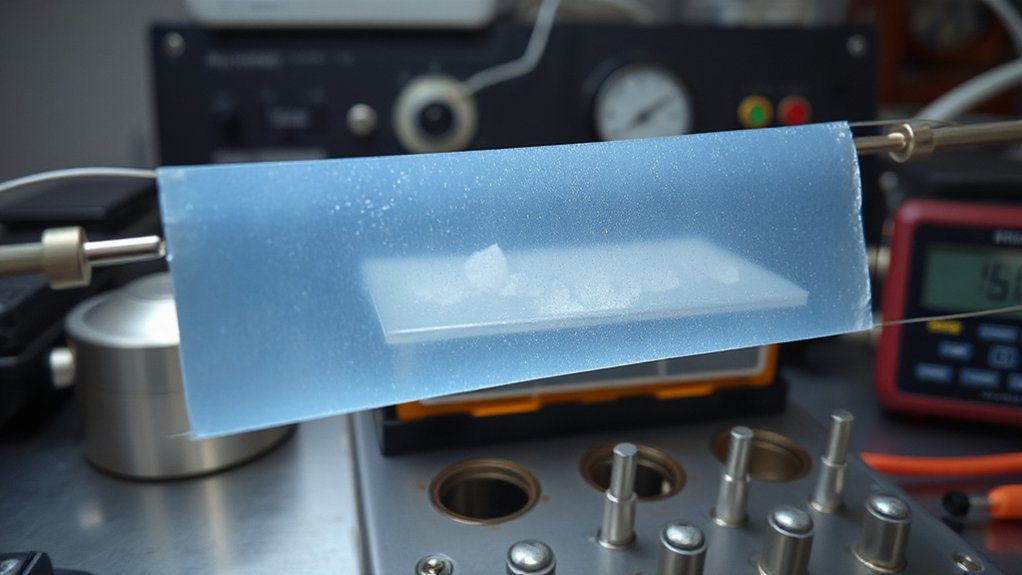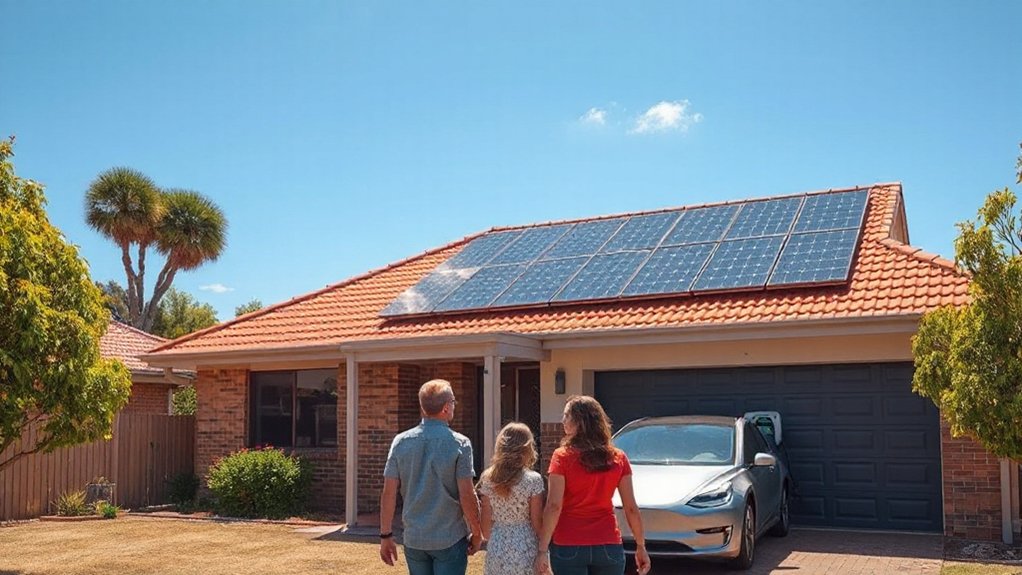While wind speed drives turbine torque, several other factors are equally important. Blade design, including length and profile shape, greatly impacts torque generation. Rotor diameter directly affects energy capture, with larger rotors performing better in low winds. Air density varies with temperature and altitude, changing torque output. Generator design and gearbox ratio determine how efficiently torque converts to electricity. Tip speed ratio optimization guarantees maximum performance. These technical elements combine to create efficient renewable energy systems.

Power generation from wind turbines depends heavily on several key torque factors. While wind speed is important, blade design plays an essential role in torque production. Longer blades create more torque, and the profile shape affects how air flows around them. Engineers carefully design the twist angle along each blade to maximize performance, and they must select blade materials that can efficiently transmit torque while withstanding stress.
The rotor’s diameter greatly impacts energy capture. When engineers double a rotor’s diameter, they quadruple its swept area. This means torque increases with the square of rotor diameter. Larger rotors excel at capturing energy even when winds are light, though site constraints often limit how big turbines can be. Wind energy remains a renewable energy source that doesn’t deplete natural resources while generating electricity efficiently.
Tip speed ratio, which compares blade tip speed to wind speed, affects torque generation. Most three-blade turbines work best with a tip speed ratio around 7. Operators can adjust this through blade pitch and rotor speed controls to maintain ideal torque production in changing wind conditions. Engineers use mode gain calculation to monitor whether the turbine is operating at optimal efficiency by analyzing the ratio of torque to squared generator speed.
The sweet spot for turbine torque is a tip speed ratio of 7, adjustable to match changing winds.
Air density directly affects torque output. Denser air provides more molecules to push against the blades. Cold air produces more torque than warm air, and turbines at high altitudes generate less torque due to thinner air. These variations mean turbine performance changes with seasons and location.
Pitch angle adjustment is vital for torque control. By changing the blade’s angle relative to the wind, operators enhance the aerodynamic forces at different wind speeds. This system helps maintain steady power output and protects the turbine in high winds.
Generator design influences how effectively torque converts to electricity. Different generator types have unique torque-speed relationships that affect overall performance. The gearbox ratio determines how turbine torque transfers to the generator. For a 10kW wind generator operating at 1000 RPM, approximately 95 Nm of torque is required for optimal electrical energy production.
Environmental conditions like wind shear and turbulence create uneven forces across the rotor. These variations cause torque fluctuations that impact power quality and turbine lifespan. Terrain features and nearby turbines further complicate the torque characteristics that designers must account for.
Frequently Asked Questions
How Does Torque Measurement Impact Wind Turbine Maintenance Scheduling?
Torque measurement allows wind farm operators to switch from time-based to condition-based maintenance.
This approach reduces unnecessary downtime by 20-30% compared to fixed schedules. It helps identify when components actually need replacement, rather than changing parts on a calendar schedule.
Predictive maintenance based on torque data can cut maintenance costs by 15-25% while allowing technicians to group repair tasks across multiple turbines efficiently.
Can Excess Torque Damage Wind Turbine Components?
Yes, excess torque can damage wind turbine components.
Transient torque reversals, which can reach 2.5-4 times normal levels, cause significant harm. These events damage bearings through skewed roller loading and create White Etching Areas.
Gear teeth suffer bending fatigue, while gearbox bearings experience surface damage. Generator windings, shafts, and couplings also face stress.
Even a 23% load increase can cut bearing life in half.
How Do Offshore and Onshore Turbines Compare in Torque Requirements?
Offshore wind turbines handle much higher torque than their onshore counterparts.
With stronger winds at sea, offshore turbines need robust designs for torques up to three times greater. Their larger rotors (up to 220m) and taller towers (150m+) capture more wind energy.
Offshore models often use direct-drive systems for 6-12 MW output, while onshore turbines typically produce 2-5 MW with smaller blade diameters and gearbox systems.
What Safety Mechanisms Prevent Catastrophic Torque Failure?
Wind turbines use multiple safety systems to prevent catastrophic torque failure.
Mechanical disc brakes can stop the turbine quickly during emergencies.
Pitch control systems adjust blade angles to reduce wind force.
Electronic controllers constantly monitor speeds and can trigger automatic shutdowns.
These systems feature redundant components and fail-safe designs.
For example, brakes automatically engage if power is lost, and backup power supplies guarantee pitch systems can still operate during emergencies.
How Is Torque Efficiency Affected by Extreme Temperature Conditions?
Extreme temperatures greatly impact torque efficiency in wind turbines.
Cold weather increases lubricant thickness, creating more resistance in moving parts. This makes the turbine work harder, reducing power output.
Hot conditions thin lubricants too much, potentially causing inadequate protection and component wear.
Temperature cycling leads to thermal fatigue and misalignment as materials expand and contract differently.
These effects can lower overall performance by 5-15% in extreme conditions.
